IT Budgeting 2023: 7 Reasons to Include Automation
December 20, 2022
6 minute read

As your organization undertakes the 2023 IT budgeting exercise, you’re balancing multiple priorities. After all, there’s growing SaaS adoption, security concerns, and operational efficiencies to consider.
Additionally, there are economic uncertainties to contend with now. Plus, there’s sky high employee turnover.
It all leads to the big question: Where should you focus your 2023 IT spending?
Regardless of your industry or company size, your IT budgeting for 2023 should include automation. Let’s take a look at several reasons why.
7 reasons your 2023 IT budget should include automation
Using original BetterCloud data published in two research reports, The Rise of Zero- Touch IT and the recent 2023 State of SaaSOps, we pulled out the main reasons why your budget needs to include automation.
With that, let’s move on to the first reason.
1. Your competitors are actively automating some of their SaaS operations
Right now, more than 75% of organizations currently use automation.
About 29% have automated more than half of their SaaS-related activities. About half have automated between a quarter and a half of their SaaS tasks.
The rest don’t use any automation, nor do they plan to do so. If your organization is in this group, it’ll be tough to compete within your industry and for talent.
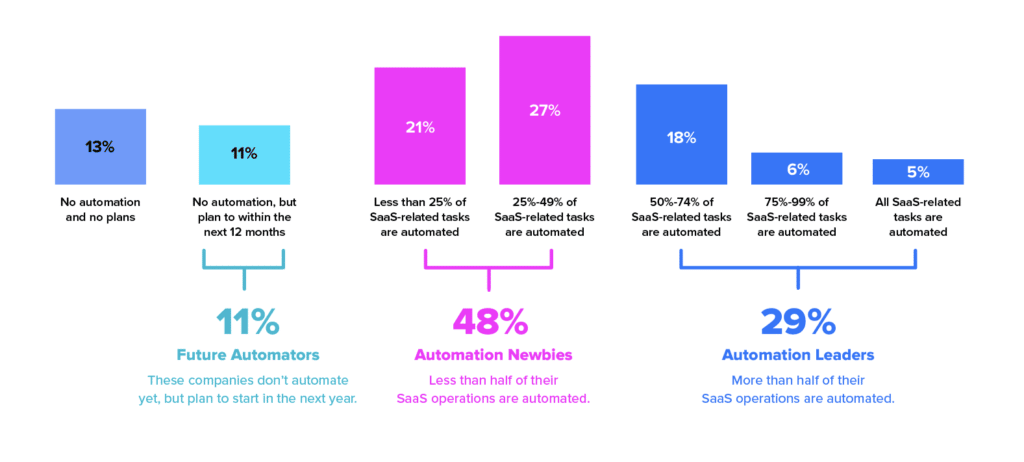
How do we know? IT professionals told us.
According to our original research, IT struggles with an annual turnover rate that approaches 23%, while 81% of IT professionals say they’re open to new opportunities.
This leads us to the next reason to add automation to your IT budget for 2023.
2. Your IT team is at risk of leaving for another organization that does automate SaaS operations
With an ongoing talent shortage and ever-present recruiting challenges, your IT department is at a disadvantage without automating. After all, automation is a hot, in-demand IT skill.
IT professionals know it, too.
More than half of IT professionals say they’re considering new positions that allow them to learn or advance their IT automation skills.
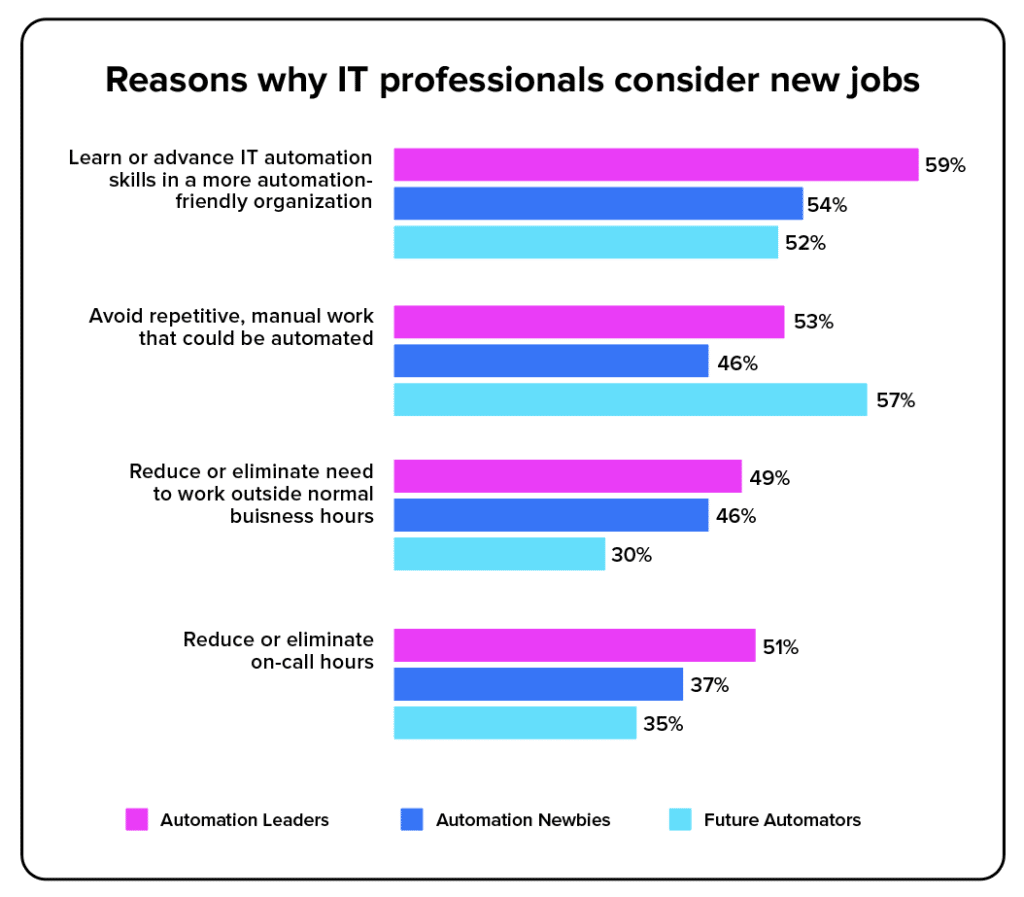
Almost as many would love to find a new job that doesn’t have the slog of repetitive, manual work that could be automated away.
This brings us to the third reason why you need automation.
3. It’s impossible to effectively manage increasingly complex SaaS environments without automation
As SaaS adoption rises and companies grow, so does the amount of data. As a result, SaaS environments get harder and harder to manage. Access management, permissions, file security, user lifecycle management—it all amounts to a mountain of routine, time-consuming tasks that are never done.
A whopping 92% of Future Automators agree they spend too much time on repetitive, manual work. And 80% of them say it prevents them from working on projects with real strategic business value.

Routine activities take IT time away from more strategic projects—important ones, too.
Instead of building a SaaS governance policy and better managing shadow IT or improving SaaS data security, IT is mired in tedious tasks like offboarding.
Improving security is a perennial IT budgeting issue, and 2023 is likely no exception. And while we’re on the topic of security, let’s move onto the fourth reason why you need to include automation in next year’s IT budget.
4. Automation can help improve your security posture and reduce human error
Every IT department struggles with securing their SaaS environment.
Insider threats—regardless of whether it’s rooted in malice or well-intentioned negligence—continually threaten your organization’s security posture. And as each new SaaS data file gets added, that risk only grows one file at a time.
As a result, it makes sense that the single biggest reason to automate is to boost security.

Let’s take a minute to explain how automation improves security posture. For one, it reduces human error and, in turn, the mistakes that can create security vulnerabilities.
Automation also helps eliminate misconfigurations. And by automating file or folder settings, automation also helps eliminate inadvertent sharing or exposed public links.
And then there’s the sharing of confidential information. Automation, using rules on what’s considered proprietary or personal, notifies IT with an alert that there’s a shared file or folder that could be a potential security violation. The violation can be automatically remediated, protecting data without any friction to the end user.
Remember that SaaS security needs to scale. It’s simply impossible to secure your environment without automation.
Now that we’ve covered the single biggest reason to automate, let’s talk about that second most common reason: to grow IT efficiency.
5. Organizations that take advantage of automation have more efficient IT departments
The 2023 State of SaaSOps Report discusses the three types of workplaces in the world today.
SaaS-Powered Workplaces are extraordinary, running almost entirely on SaaS. Compare this to Workplaces in Transition and Traditional Workplaces, which use far less SaaS.
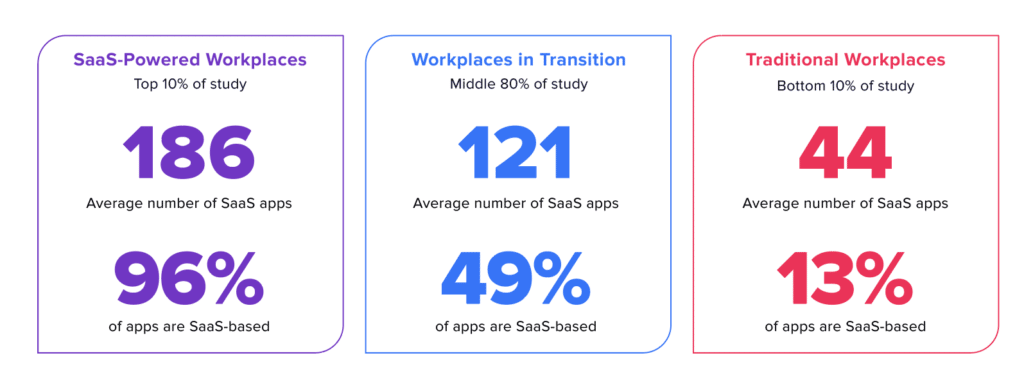
At the same time, consider their IT ratios, which show the number of employees per IT team member. SaaS-Powered Workplaces have one IT team member for every 83 employees.
Meanwhile, Traditional Workplaces have one IT team member for every 59 employees.
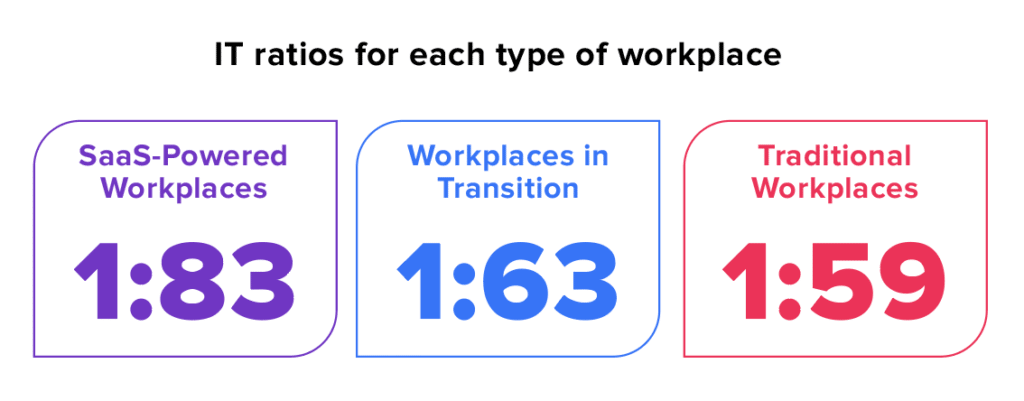
This means that SaaS-Powered Workplaces are about 30% more efficient. These organizations use more SaaS and effectively orchestrate entire processes, which is why they operate such lean teams. It’s also why they experience larger operational efficiency gains. Automation is one of the most powerful ways IT can accomplish more in less time, with fewer resources.
Imagine what you could achieve if your team was a third more efficient? Imagine how much easier it would be to recruit and keep IT talent?
Efficiency is only one benefit, but there are other reasons why your 2023 IT budget ought to include automation.
6. Automation meets expectations and delivers on promised benefits
We’ve covered both operational efficiency and security in previous reasons for automation. However, the fact that automation meets expectations is another reason to pursue it.
IT projects can be risky. Ever migrate a legacy application to the cloud? Who knows if that app migration will deliver a positive return on investment? Who knows if that app provides the required performance?
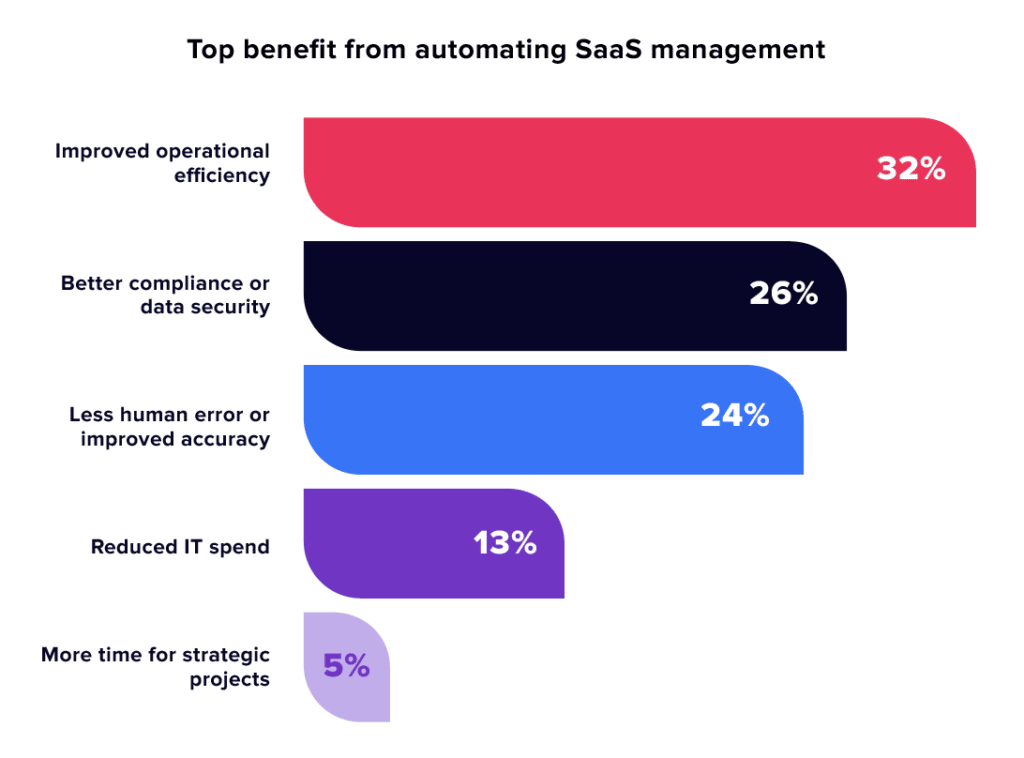
But when it comes to IT automation projects, there’s much less risk. While success is never 100% guaranteed, automation projects are activities of incremental improvement.
You start by automating a few simple tasks. Over time, you refine it to include the entire process. A good example is help desk tickets—these time-consuming, tedious, manual tasks are a great place to start to increase operational efficiency.
This brings us to the seventh reason to add automation to your IT budget in 2023.
7. Automation enables you to build a faster, more effective help desk
When it comes to automation, help desk-related tasks are rich with automation possibilities. These processes are done over and over, are time consuming, and often leave employees idle and unproductive in the meantime.
Right now, nearly half of all organizations already automate onboarding, while more than 40% automate offboarding and the dreaded password and multifactor authentication resets.
About a third are just getting started with creating initial automations, and around 20% are hoping to jump into the automation arena.
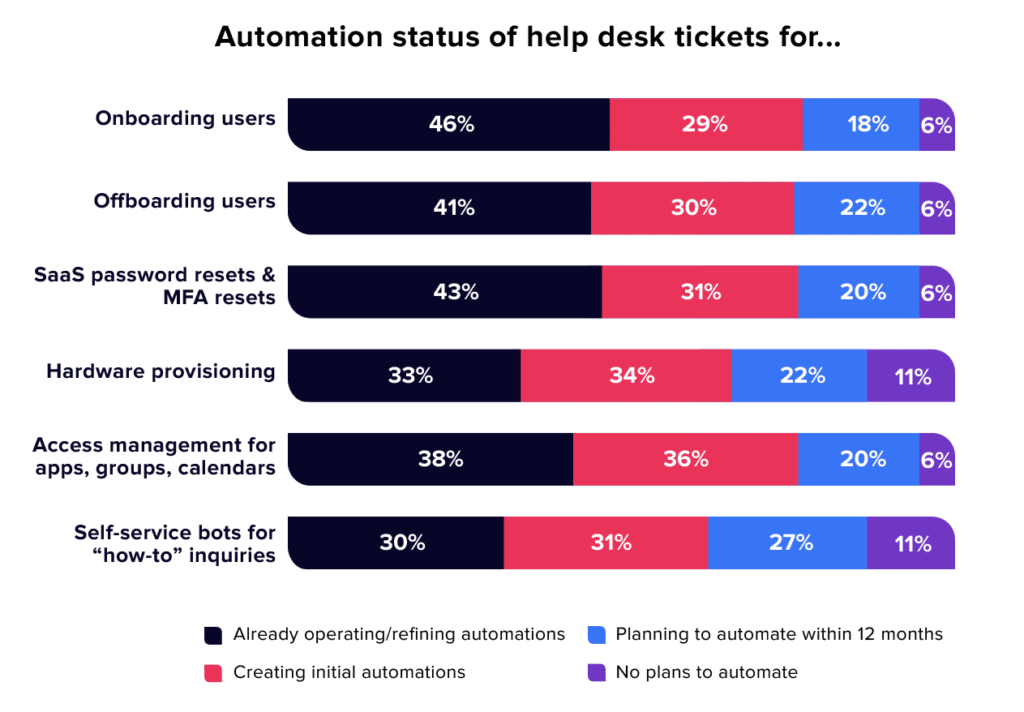
If you’re in the 6 to 11% of organizations that have no plans to automate any help desk tasks, it will be difficult to remain competitive.
The bottom line on IT budgeting in 2023: Automation is the future
As you contemplate your IT budget for 2023, we hope you’ll consider these seven reasons and make automation a key priority. After all, you’ll be joining the 72% of IT professionals who believe that zero-touch automation is the future of SaaSOps. This next evolution of automation encompasses the orchestration of end-to-end, automated workflows, in order to help IT more easily manage repetitive, manual IT processes.
Getting started is easy. First, pick your processes for your first automations.
To do this, simply look at your most common requests, or help desk tickets. Look for the requests that frequently reoccur. Next, prioritize them according to how time consuming they are to resolve or those that most frustrate employees, partners, and customers.
These are the processes that are ripe for automation. Remember that automation is a journey, so the faster you get started, the faster you’ll reap the rewards.
To learn more about how BetterCloud can help you automate your SaaS operations, request a demo.






